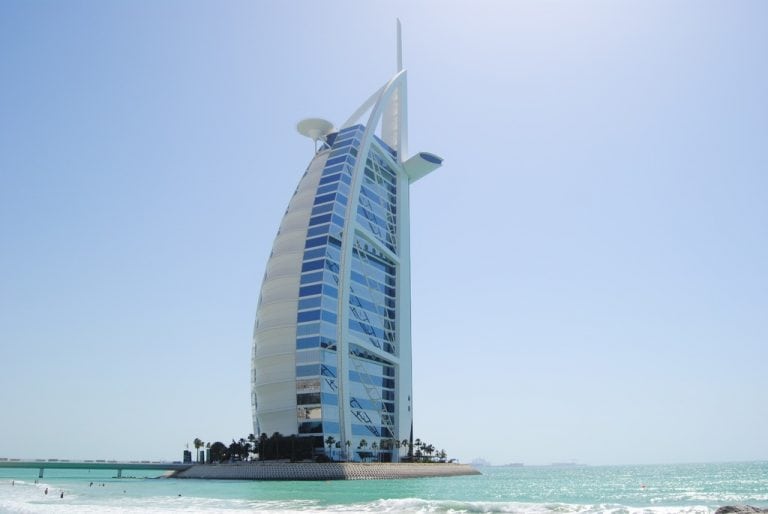With an international climate that seems to be heating up and becoming more complex by the week—and with the EU preparing for a trade war with the United States—Italy’s wine industry is obliged to closely monitor the performance of secondary markets. Having secured the all-time record of €8 billion in exports—a milestone that carries several contradictions—it seems wise to explore new opportunities, not so much in the hope of replacing traditional markets but rather to diversify its portfolio. The figures for exports of Made in Italy wine are clear and reveal a certain imbalance: the United States, Germany, and the United Kingdom, with €3.8 billion, account for almost 50% of the business. In 2024, shipments to these three key clients saw an increase in value across the board, though only Germany recorded a decline in volume. However, there is a caveat.
Risk factors and opportunities
In these three top markets, various factors—some temporary, others structural—suggest a possible future decline in demand for Italian wine: the import tariffs announced for April in the United States, a decision by the Trump administration, combined with a real drop in consumption confirmed by market analysts; the impact of new alcohol duties in the United Kingdom and changing drinking habits among British consumers; and the downward trend in household purchases in Germany, struggling with the effects of the economic crisis.
Looking at the ranking of the top ten buyers, other markets for Italian wine have delivered surprises—such as Russia (positive) and France (negative). Meanwhile, smaller markets are quietly emerging. Given the uncertainties surrounding the three most important clients of Italian wine, these alternative destinations could represent a tangible opportunity for many wine producers.

Key markets
Let’s take a closer look at the top 10 destinations for Italian wine in 2024. The United States, Germany, and the United Kingdom have already been mentioned, but another North American market could prove to be an interesting alternative: Canada. Last year, the country showed strong growth, with Italian wine exports increasing from 70.9 to 73.6 million litres, generating €447 million (+15.3%). Here, the Trump-Trudeau trade war (soon to be replaced by Mark Carney’s administration) is only just beginning, and the strategic shift away from Made in USA products can only create further opportunities for Italian wine.
Back in Europe, according to Istat data analysed by Tre Bicchieri (Gambero Rosso), Switzerland saw a decline, with 68 million litres (-4%) and total sales of €411 million (-1.9%). France, a major buyer of Prosecco PDO, remained stable in volume (94 million litres) but recorded a slight drop in value (-0.8% to €304.6 million). However, France still manages to sell more wine to Italy (almost €100 million worth) than it imports.
The Netherlands recorded strong growth (+12% in volume, +10% in value), but Russia stood out the most, climbing the rankings with 70 million litres of Italian wine purchased (+40%) and a total business value of €257 million (+45%). Belgium remained stable in quantity but saw a decline in value (€227 million), while Sweden rebounded (+6.7% in volume, +3% in value, reaching €189.6 million), surpassing Japan, which imported 44.7 million litres (+12.5%) with values remaining stable at €184.2 million.
A year to forget—though no longer a surprise—for China, which saw an 11.8% drop in volume and a 10% decline in business, falling to €89.5 million.

Emerging markets
2024 saw double-digit growth in many emerging markets, often outperforming mature ones in terms of percentage increase, though not necessarily in absolute value.
Staying within Europe, Austria recorded strong growth, with 55 million litres imported (+13%) and revenues reaching €163.6 million (+14.3%). Another loyal market for Made in Italy wine is Poland, which imported 39.6 million litres (+5.3%) with a value of €128.6 million (+0.6%). The Czech Republic purchased less wine (37.5 million litres, -8.7%) but spent more than in 2023, reaching €105.6 million (+4%).
Three Central and Eastern European markets showed notable increases:
- Romania: 10.5 million litres (+9%), €40.5 million (+10%)
- Greece: 11.8 million litres (+40%), €33.7 million (+22.7%)
- Croatia: 7.8 million litres, nearly doubling imports from Italy (+90% in one year), for a total business value of €15 million (+41%).
Excluding Poland, sparkling wine saw significant double-digit growth in all these markets, with value increases exceeding 20% in Greece and Austria, and +37% in Croatia.

The case of Ireland
One particularly notable case in Italian wine exports is Ireland. In 2024, Italy’s shipments to Ireland increased from 13.5 to 16.5 million litres, with revenue rising from €48.9 million to €58.5 million—equivalent to a 20% increase in both volume and value.
This is not a one-off event. A closer look at the data shows that this growth is part of a steady upward trend over the past five years, significantly exceeding pre-pandemic levels, when revenue in 2019 stood at €35.1 million.
However, a challenge looms on the horizon: in spring 2026, despite efforts by Italian Minister Lollobrigida to persuade the Irish government to reverse its decision, a law mandating health warning labels on wine bottles will come into force. Whether this public health campaign will impact alcohol consumption and imports remains to be seen.

Francesco Lollobrigida (Italy) and Martin Heydon (Irland)
Opportunities in Mercosur
As EU Commission President Ursula von der Leyen has pointed out, the EU is increasingly focusing on Mercosur (Brazil, Argentina, Paraguay, Uruguay, and Bolivia) and India as strategic destinations for future agri-food trade.
For wine, Mercosur (€46.7 million, +15% in 2024) presents a promising growth opportunity, particularly with the new trade agreement under discussion. Brazil is currently the dominant player, with Italian wine sales rising from 9.77 to 11 million litres, generating €41.3 million (+12.6%).
In Central America, Mexico has also increased its imports of Italian wine, reaching 18.5 million litres (+9%) with revenue growing from €51.7 million to €56.8 million (+10%). Meanwhile, Ecuador remains a small but promising market, importing 3.7 million litres (+11%) and €6.8 million (+10%).

United Arab Emirates - Dubai
Arab and Asian markets
Further afield, the United Arab Emirates recorded strong growth, with 4.3 million litres imported (+32.5%) and revenue reaching €27.7 million (+34.5%). Sparkling wine saw an annual increase of 20%, reaching €10 million.
India remains a market of potential rather than reality. Italy exports just one million litres to India, as high taxes currently keep consumer prices high. A trade agreement with the EU, strongly advocated by von der Leyen, could unlock new opportunities.
In East Asia, Thailand imported 3.4 million litres (+26%) with a total business value of €21.6 million (+18%). Meanwhile, Singapore declined slightly (€21.7 million), South Korea remained stable (€50.6 million), and Hong Kong’s purchases dropped from €25 million to €22 million.
Sales in Australia remained steady at €72.2 million, while some markets saw sharp declines, such as Nigeria (-38% in volume) and Norway (-9% in volume, with spending down from €103 million to €92 million).

Brazil - Rio de Janeiro
Outlook for 2025
Given the current international climate, it seems unlikely that 2025 will match last year’s export performance. On Thursday, 13 March, President Trump escalated tensions by threatening 200% tariffs on EU wines and Champagne.
To mitigate economic damage, Italian producers must anticipate, adapt, and diversify their promotion strategies, whether through OCM funds or additional resources. In a time of global uncertainty, this is the only certainty.


 Versace opens a super hotel with an Italian restaurant. Here's what Donatella Hotel & Restaurant in Miami will be like
Versace opens a super hotel with an Italian restaurant. Here's what Donatella Hotel & Restaurant in Miami will be like At The Crown Tirana, service and quality at the highest levels
At The Crown Tirana, service and quality at the highest levels We tasted Komb(w)ine, the new product that combines grape must and kombucha. Here’s our verdict
We tasted Komb(w)ine, the new product that combines grape must and kombucha. Here’s our verdict What changes for the export of Italian wines to China under the new regulations?
What changes for the export of Italian wines to China under the new regulations? “Forget dealcoholised wines. The future is Komb(w)ine.” Moser and Ravizza present a new grape must-based product
“Forget dealcoholised wines. The future is Komb(w)ine.” Moser and Ravizza present a new grape must-based product







